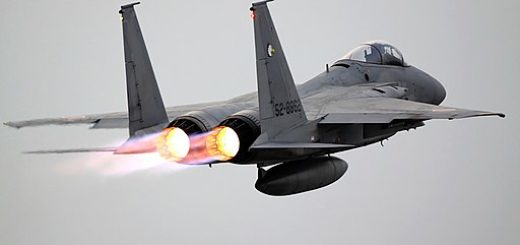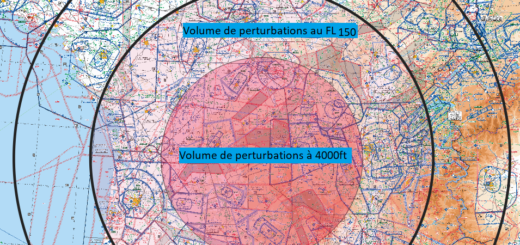Breaking News: Japan scrambles fighter jets as Russian Tu-95MS bombers approach airspace boundary
{loadposition bannertop}
{loadposition sidebarpub}
Tu‑95MS strategic bombers of the Russian Aerospace Forces conducted a high-profile six-hour patrol flight over the neutral waters of the Sea of Japan on August 19, 2025, prompting the immediate scramble of Japanese fighter jets. The Russian Ministry of Defense confirmed that the bombers were accompanied by Su‑35S and Su‑30SM multirole fighters, which provided close escort throughout the mission. Although the flight was carried out entirely within international airspace, its proximity to Japanese defense zones reignited security concerns in Japan and underscored the intensifying military friction across the Indo-Pacific region.Follow Army Recognition on Google News at this link
Russian Air Force Tu-95MS strategic bomber in flight during a long-range patrol over the Sea of Japan on August 19, 2025, escorted by Su-35S multirole fighters amid heightened regional tensions. (Picture source: Russian press agency TASS)
The Tu‑95MS, known in NATO classification as the “Bear-H,” is a long-range strategic missile carrier and one of the most enduring symbols of Russian airpower. Originally developed during the Cold War, the platform has been extensively upgraded to meet modern operational standards. Its current iteration is equipped to launch Kh‑101 and Kh‑102 air-launched cruise missiles, which are capable of delivering both conventional and nuclear payloads. With a flight endurance exceeding 14 hours and an unrefueled range of over 10,000 kilometers, the Tu‑95MS gives Russia the ability to project strategic firepower deep into adversary territory without relying on forward bases or air-to-air refueling support. The aircraft’s continued use demonstrates its unique value as a long-endurance platform capable of executing both nuclear deterrence and conventional power projection missions across multiple theaters.
The inclusion of Su‑35S and Su‑30SM fighters in this patrol mission further reflects the layered doctrine of Russian long-range aviation. The Su‑35S, a fourth-generation-plus air superiority fighter, is equipped with the Irbis-E radar system and thrust-vectoring engines, allowing it to perform aggressive maneuvers and defend high-value assets in contested airspace. The Su‑30SM, a multirole platform optimized for long-range operations, contributes electronic warfare capabilities, precision-strike options, and operational flexibility. Together, these fighters provide defensive coverage against potential intercept attempts and enhance the strategic bomber’s survivability during extended missions. Their deployment also sends a clear message about Russia’s ability to operate multi-platform air task groups in sensitive regions under real-world conditions.
Conducting such a high-visibility operation over the Sea of Japan holds deep strategic and symbolic significance for Moscow, reflecting its broader objective to challenge Western influence in the Indo-Pacific. This maritime corridor is not just a geographic buffer zone—it is a densely monitored and militarized theater bordered by Japan, South Korea, and U.S. forward-deployed forces. It hosts multiple American air bases, ballistic missile defense systems, and naval operations centered around aircraft carrier strike groups and maritime surveillance assets. By projecting strategic bombers like the Tu‑95MS over these neutral waters, Russia signals its capability and willingness to operate far from its home territory in proximity to advanced Western military infrastructure. These flights are calibrated to demonstrate global reach, long-range strike potential, and the operational endurance of Russian long-range aviation, all while remaining within the boundaries of international law.
Beyond signaling, such missions serve as valuable live training exercises under realistic conditions. Russian aircrews use these sorties to rehearse extended-duration patrols while being tracked by foreign early warning systems and surveillance platforms, such as Japan’s E‑767 AWACS or U.S. Navy P‑8A Poseidons. These encounters allow Russian forces to test their performance in electromagnetic-rich environments, monitor response timelines from adversary air forces, and simulate scenarios involving electronic countermeasures, potential jamming, and communications under pressure. In effect, every flight serves a dual purpose: demonstrating resolve to potential adversaries and building crew proficiency for high-intensity operations. It also helps to normalize Russia’s military footprint in a region long dominated by U.S. and allied forces, shifting the perception of strategic balance in the region.
Japan’s reaction to this operation, including the rapid dispatch of its fighter aircraft, highlights the increasing fragility of the regional security environment. Although no violation of Japanese airspace occurred, the proximity of the Russian aircraft to Japan’s air defense identification zone (ADIZ) required immediate visual identification and monitoring in accordance with standard operational protocols. For the Japan Air Self-Defense Force, such encounters are not merely routine—they are active demonstrations of defense readiness, particularly at a time of heightened tension with both Russia and China. Ongoing territorial disputes over the Kuril Islands, North Korea’s ballistic missile provocations, and increased Chinese air and maritime activity in the East China Sea have driven Tokyo to adopt a more assertive stance on regional defense. Each Russian patrol near Japan adds pressure to expand early warning coverage, enhance interception capabilities, and accelerate joint preparedness with U.S. forces stationed on Japanese soil.
For Army Recognition readers, this latest deployment confirms the enduring role of strategic bombers as tools of geopolitical influence and tactical leverage. The Tu‑95MS is not simply a relic of Cold War engineering but a fully operational platform embedded in Russia’s broader strategy of power projection, deterrence, and regional destabilization. Each of these missions serves as a deliberate test of enemy reaction patterns and a rehearsal for future scenarios involving contested airspaces and rapid-response environments. As great-power competition intensifies across the Asia-Pacific, the presence of Russian long-range bombers near allied territories reinforces the urgent need for integrated air defense systems, real-time intelligence sharing, and sustained investment in counter-air capabilities.

{loadposition bannertop}
{loadposition sidebarpub}
Tu‑95MS strategic bombers of the Russian Aerospace Forces conducted a high-profile six-hour patrol flight over the neutral waters of the Sea of Japan on August 19, 2025, prompting the immediate scramble of Japanese fighter jets. The Russian Ministry of Defense confirmed that the bombers were accompanied by Su‑35S and Su‑30SM multirole fighters, which provided close escort throughout the mission. Although the flight was carried out entirely within international airspace, its proximity to Japanese defense zones reignited security concerns in Japan and underscored the intensifying military friction across the Indo-Pacific region.
Follow Army Recognition on Google News at this link
Russian Air Force Tu-95MS strategic bomber in flight during a long-range patrol over the Sea of Japan on August 19, 2025, escorted by Su-35S multirole fighters amid heightened regional tensions. (Picture source: Russian press agency TASS)
The Tu‑95MS, known in NATO classification as the “Bear-H,” is a long-range strategic missile carrier and one of the most enduring symbols of Russian airpower. Originally developed during the Cold War, the platform has been extensively upgraded to meet modern operational standards. Its current iteration is equipped to launch Kh‑101 and Kh‑102 air-launched cruise missiles, which are capable of delivering both conventional and nuclear payloads. With a flight endurance exceeding 14 hours and an unrefueled range of over 10,000 kilometers, the Tu‑95MS gives Russia the ability to project strategic firepower deep into adversary territory without relying on forward bases or air-to-air refueling support. The aircraft’s continued use demonstrates its unique value as a long-endurance platform capable of executing both nuclear deterrence and conventional power projection missions across multiple theaters.
The inclusion of Su‑35S and Su‑30SM fighters in this patrol mission further reflects the layered doctrine of Russian long-range aviation. The Su‑35S, a fourth-generation-plus air superiority fighter, is equipped with the Irbis-E radar system and thrust-vectoring engines, allowing it to perform aggressive maneuvers and defend high-value assets in contested airspace. The Su‑30SM, a multirole platform optimized for long-range operations, contributes electronic warfare capabilities, precision-strike options, and operational flexibility. Together, these fighters provide defensive coverage against potential intercept attempts and enhance the strategic bomber’s survivability during extended missions. Their deployment also sends a clear message about Russia’s ability to operate multi-platform air task groups in sensitive regions under real-world conditions.
Conducting such a high-visibility operation over the Sea of Japan holds deep strategic and symbolic significance for Moscow, reflecting its broader objective to challenge Western influence in the Indo-Pacific. This maritime corridor is not just a geographic buffer zone—it is a densely monitored and militarized theater bordered by Japan, South Korea, and U.S. forward-deployed forces. It hosts multiple American air bases, ballistic missile defense systems, and naval operations centered around aircraft carrier strike groups and maritime surveillance assets. By projecting strategic bombers like the Tu‑95MS over these neutral waters, Russia signals its capability and willingness to operate far from its home territory in proximity to advanced Western military infrastructure. These flights are calibrated to demonstrate global reach, long-range strike potential, and the operational endurance of Russian long-range aviation, all while remaining within the boundaries of international law.
Beyond signaling, such missions serve as valuable live training exercises under realistic conditions. Russian aircrews use these sorties to rehearse extended-duration patrols while being tracked by foreign early warning systems and surveillance platforms, such as Japan’s E‑767 AWACS or U.S. Navy P‑8A Poseidons. These encounters allow Russian forces to test their performance in electromagnetic-rich environments, monitor response timelines from adversary air forces, and simulate scenarios involving electronic countermeasures, potential jamming, and communications under pressure. In effect, every flight serves a dual purpose: demonstrating resolve to potential adversaries and building crew proficiency for high-intensity operations. It also helps to normalize Russia’s military footprint in a region long dominated by U.S. and allied forces, shifting the perception of strategic balance in the region.
Japan’s reaction to this operation, including the rapid dispatch of its fighter aircraft, highlights the increasing fragility of the regional security environment. Although no violation of Japanese airspace occurred, the proximity of the Russian aircraft to Japan’s air defense identification zone (ADIZ) required immediate visual identification and monitoring in accordance with standard operational protocols. For the Japan Air Self-Defense Force, such encounters are not merely routine—they are active demonstrations of defense readiness, particularly at a time of heightened tension with both Russia and China. Ongoing territorial disputes over the Kuril Islands, North Korea’s ballistic missile provocations, and increased Chinese air and maritime activity in the East China Sea have driven Tokyo to adopt a more assertive stance on regional defense. Each Russian patrol near Japan adds pressure to expand early warning coverage, enhance interception capabilities, and accelerate joint preparedness with U.S. forces stationed on Japanese soil.
For Army Recognition readers, this latest deployment confirms the enduring role of strategic bombers as tools of geopolitical influence and tactical leverage. The Tu‑95MS is not simply a relic of Cold War engineering but a fully operational platform embedded in Russia’s broader strategy of power projection, deterrence, and regional destabilization. Each of these missions serves as a deliberate test of enemy reaction patterns and a rehearsal for future scenarios involving contested airspaces and rapid-response environments. As great-power competition intensifies across the Asia-Pacific, the presence of Russian long-range bombers near allied territories reinforces the urgent need for integrated air defense systems, real-time intelligence sharing, and sustained investment in counter-air capabilities.






